A woman rider recently asked me if the exercises in one of my videos could be practiced on grass. The video in question consists of a series of tight turns that require the motorcycle to be leaned over near its limits.
The first thing I asked her was what kind of bike she was riding. When she replied that it’s a Harley-Davidson Softail Deluxe, I immediately said no. You must practice on a paved surface. Now, you would think that common sense should tell a person that a street bike is designed to be ridden on the street, but as they say, common sense isn’t very common anymore. This conversation, combined with some of the things I see riders doing when the surface they’re riding on is less than optimal inspired me to write this article about motorcycle traction.
Traction Rule #1: Keep your street motorcycle on the street.
Of course, if you have to leave the pavement to avoid a crash, do it. Keep in mind that once off the pavement, traction will be extremely limited. This means you can’t lean, and you must be very careful about applying your brakes, especially the front brake.
Let’s say you have to swerve around a vehicle that has pulled out in front of you and your only escape path is a grassy shoulder. Once you’ve swerved off the road, straighten up the bike and use engine braking and careful application of the brakes to slow you down gradually. Come to a stop if you have to, otherwise continue carefully back onto the road. If you've stopped on the grass, when you’re ready to pull back onto the road, slip the clutch until you’re back on dry pavement. The heavier the bike, the more difficult it is to control on grass, sand, or gravel.
There are, of course, motorcycles that can be ridden both on and off the road. These bikes are called dual sports or adventure tourers. Most of these bikes come standard with semi-knobby tires, and are much lighter in weight so they can achieve greater lean angles in off-road scenarios.
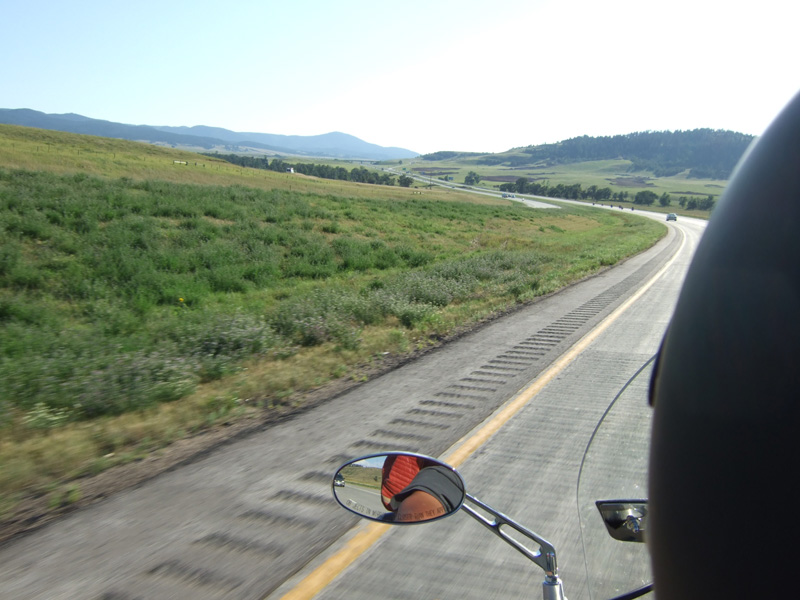
Traction Rule #2: Wet pavement reduces traction drastically.
Pavement that is wet reduces a motorcycle’s traction by at least 50 percent. This means you should limit your lean angles to about half the amount you would use in dry conditions. Since the bike must lean in order to turn at speed, you better slow down on a winding road.
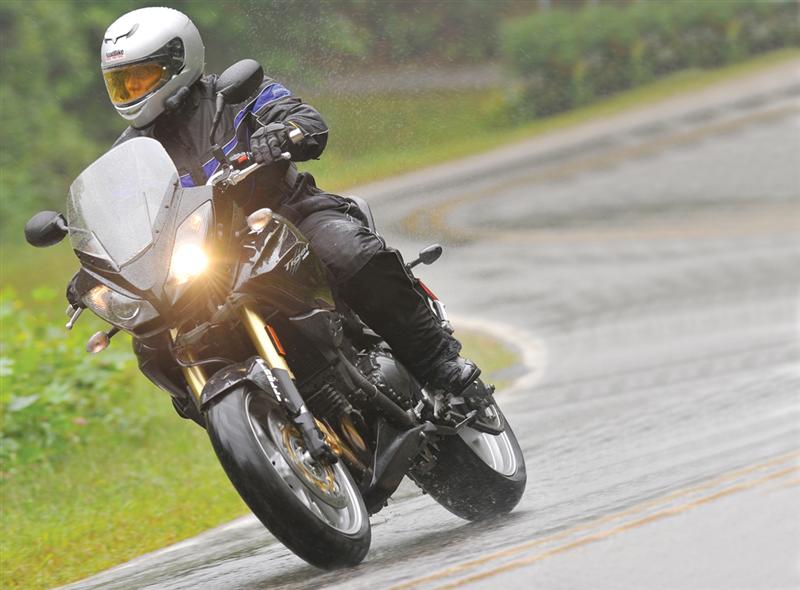
Traction Rule #3: Wet pavement increases stopping distance.
Your stopping distances will also be about double what they would be in dry conditions. This means your following distance from vehicles in front of you should be about double as well.
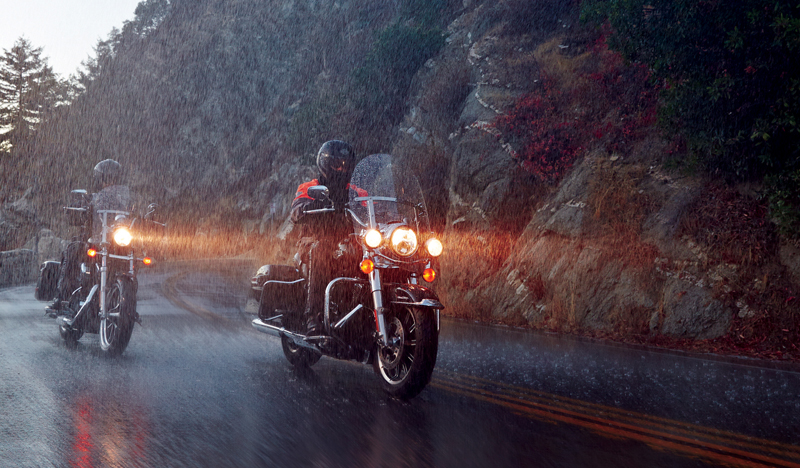
Traction Rule #4: Painted lines on a wet road are almost as bad as ice.
Avoid leaning the motorcycle at all when riding over painted lines, such as safety zones or cross walks. Make sure that if you’re applying your brakes on any type of painted line, you do so with extreme caution. Manhole covers, railroad tracks, and cattle grids are also slick as ice when wet. Avoid them if possible, and avoid being leaned over if you have to ride over them.
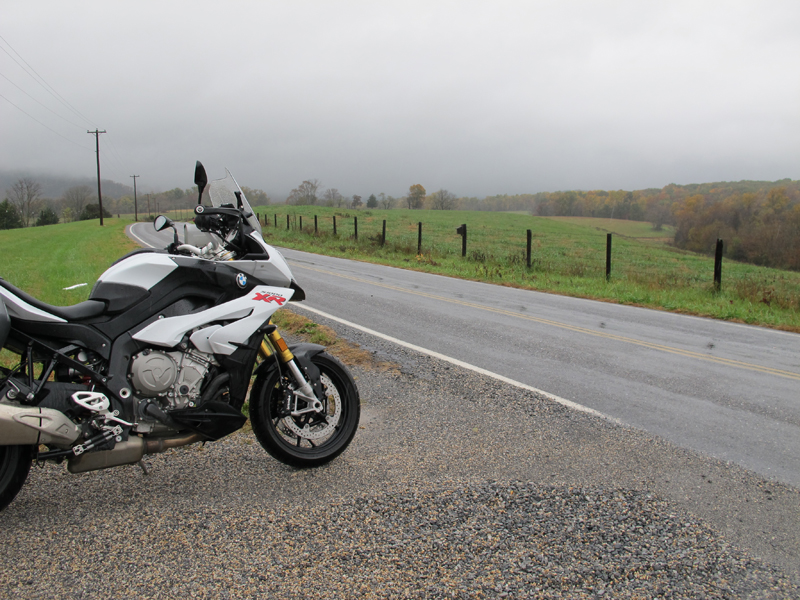
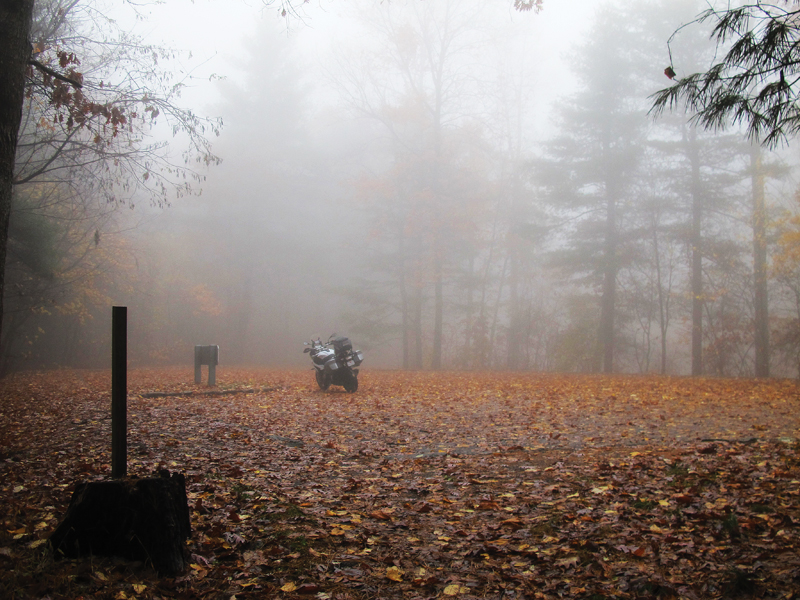
Traction Rule #5: Watch out for tar strips.
I just got back from Ohio where they love to patch the roads with tar strips. These strips become very slick even in perfectly dry conditions once the temperature is above 70 degrees. In fact, we were performing my rider skills show in a parking lot at the Mid-Ohio Race Track, and there were tar strips every 20 feet. Every time I crossed one of these tar strips, I could feel the front tire slip out a few inches. On a high-speed turn on one of these tar strips, the bike could easily low side.
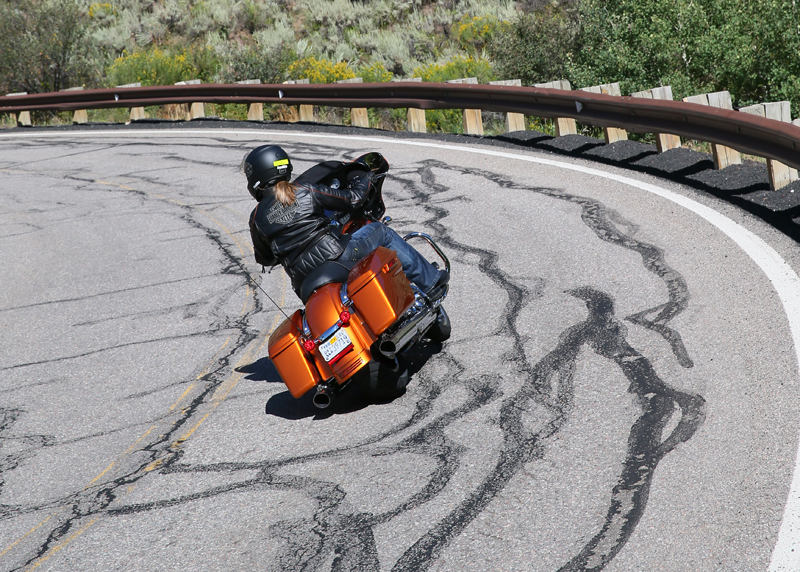
Traction Rule #6: Make sure you are able to stop within your sight distance.
There will be times where the road is perfectly dry, but as you round a curve you suddenly see some sand or gravel in your path. You can avoid a low side crash in that situation by straightening up the bike before you cross the sand or gravel. To avoid that situation altogether, which of course is the best course of action, scan the surface well ahead of your path of travel.
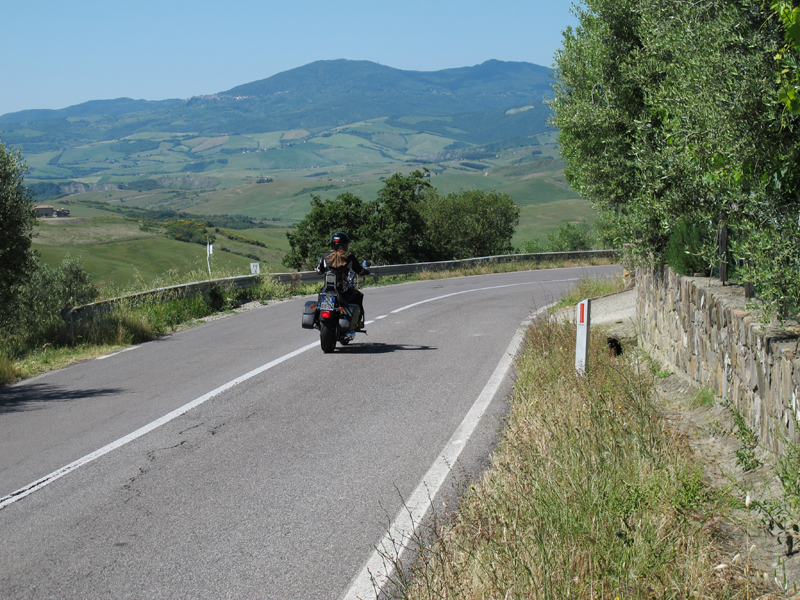
Keep these six rules in mind the next time you find you and your motorcycle where your motorcycle tires’ traction is reduced.
About the Author
Jerry Palladino is the founder of Ride Like A Pro, Inc., a company that produces motorcycle instructional DVDs and books. Jerry is a former motorcycle police officer who teaches riders the same skills that that motor officers use when riding their motorcycles. His classes are aimed at experienced riders who want to enhance their motorcycle skills. Visit RideLikeAPro.com.
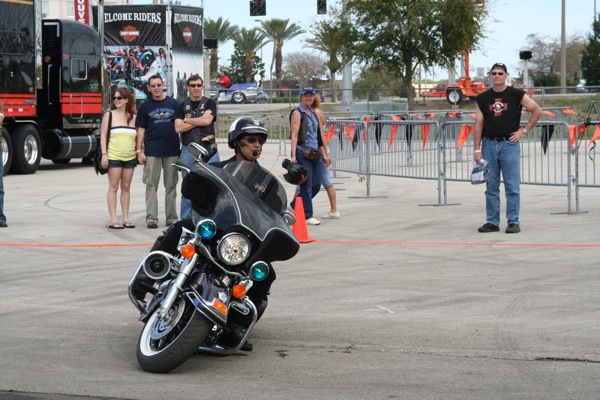

I just love to read these articles. I started riding at a very young age (52 years) and have been riding for four years now.
Thanks for more excellent information and advice Jerry. I have your DVD, Ride Like A Pro, and have learned a great deal from you. Many thanks!
Now it’s changed it to right foot down so you can shift quicker when necessary.I have never heard right foot down, just shift while you are stopping so that you are ready to go again. If you stop in fourth gear and then do a check behind you to discover a truck barrelling toward you, it will take much longer for you to get going again than if you had stopped in first gear, regardless of which foot was down.Hill starts are also made much easier with the left foot down, so that you can still use the back brake.If someone is talking about low siding in a corner, they are talking about cornering at speed, where you would generally want to use both brakes. For low speed maneuvering i.e. first gear, riding the rear brake to help keep things stable works great.
Well written article. Thanks for sharing.Another hazard to avoid is fresh cut grass that has been thrown onto the road by a lawn mower.
Two more slippery spots that can surprise you are:1. Toll booths: Some cars stopping at a toll booth drip some oil. All of the drops of oil gang up waiting for you to put your foot down at the toll both. Then the oil drops move your foot three feet to the left.2. Parking areas and pull-offs along mountain roads. These areas can look perfectly level until you put your sidestand down and suddenly discover a 10-percent slope!
This comment is directed to anyone wondering about tire age and how long in years, rather than mileage, a tire is useful.Generally, a tire more than five years old has outlived it’s usefulness. That being said, if you’re not checking your tires over before each ride and checking pressures regularly, the older the tire gets, the more dangerous it is to ride on.Tires degrade over time, even when stored. When in use, UV rays degrade the sidewalls of your tires, regardless of whether or not it’s being ridden. Left parked, the sidewalls can degrade on one side depending on which side gets the most sunlight exposure. Inspect your tires regularly. If there’s still lots of tread on an old tire, I’d hesitate to keep it on the bike more than five or six years.
I think this article was very well written. And always check tire pressure!
I’ve been riding for many years and have taken many safety courses. I am also not a weekend warrior, I ride a lot. It appears that there are many different techniques that contradict each other. And it makes things a bit confusing.I originally learned to stop with my left foot down so you still have control of both brakes until stopped. Now it’s changed it to right foot down so you can shift quicker when necessary.As pertaining to this article and leaning, obviously, if possible, you’d like to be able to straighten the bike. In racing school, they teach you that you can brake through a turn as long as the lean angle is compensated with the speed. For example, if you lean at 20%, you can brake up to 20% before losing traction, etc. I also learned that at low speed, ride the rear brake and bring up the RPM to stabilize the bike (as a gyro). Now, certain people are saying that riding the rear brake is incorrect as it can cause a low side and you should use the front brake to vary the percentage of traction. I went to a police motor officer competition and throughout, none of the officers ever touched the front brake. They all used the original techniques I learned—rear brake and ride the clutch.All the theories make sense — how do I know what is truly correct?
Excellent article! But it would be nice to talk about the temperature of the tires. I live in Massachusetts and as everyone knows hot temperatures aren’t our strongest points here. So I often see my friends now in the spring time jumping on their bikes first thing in the morning after the temperature at night been around 55 degrees or so to go for a ride with very cold tires and don’t wait for the proper tires temperature or not allowed the tires to get to the proper temperature. And give too much gas or leaning too much on corners to the the point of loosing traction.As a matter of fact, one of my closest friends just dumped his brand new Suzuki Hayabusa for that reason. He works overnights. He woke up and went to leave with cold tires after the temperature overnight been at the low 50 mark, gave too much gas and broke traction of the rear tire and dumped the brand new bike leaving him with few scratches on his left arm and the whole left side of his motorcycle damaged!
This is an excellent article. The author is not advising us to curtail our riding, just be careful!
I think some of this advice does the rider a disservice, particularly regarding rain traction and tar snakes. Both are reduced traction, yes, but I think most riders actually overstate by how much. Regarding rain, I’d heard “you still have 85 percent of traction in the wet” – whether accurate or not, it conveys that you still have most of your traction (the encouraging message riders need) but as the author stated, “onserve your lean angle.” This skill – positioning your body to minimize lean angle – is something that can be learned at a track school or track riding book like Keith Code’s, and is important to have in your toolkit.Regarding tar snakes: they’re uncomfortable in the dry and probably treacherous in the wet, but I’ve yet to hear of someone going down because of tar snakes (the key encouraging message here). The skill needed is vision – the tendency is to watch the road right in front of you, as well as ride over them due to target fixation. What needs to be learned is to see the path you want to take, not the obstacle you’re trying to avoid, and better yet do that with your peripheral vision, while your eyes are scanning farther up the road. Requires mindfulness and practice to make this a habit.Overall – I’d hate it if someone took away from this article “it’s too dangerous to ride in the rain”. It’s not fun exactly but it’s sometimes necessary, so ride in the rain when you can so you can ride in the rain when you have to.
Good to put it out here.
As a new rider I find the articles helpful and inspirational. Do you have an opinion on tire age? Is 10 years old too old for motorcycle tires even if the tread is good?
A tire’s age has less to do with performance than quality of the tread. So long as the tread is still in good shape the tire should perform well.
I don’t remember seeing a warning about new tires being slick. Especially on cruisers and street bikes. When guys leave a shop having new tires put on a lot of times they leave out and really throttle on it. Be careful with new tires. They can let the bike get out from under you.
Don’t forget during early spring and late fall there could be black ice in shaded areas due to overnight freezing temperatures.
Always good reminders.
Great article for new riders and old. Great facts to remember.
Great article! Very well put together enough so that everyone can grasp the purpose of the rule.When I first started riding I was lucky enough to get the author’s dvd. I wonder how many lives has he saved!Thanks for article.
I have definitely learned some interesting things about traction over the two and a half years that I’ve been riding. The tip on the tar snakes couldn’t be more true! My Gixxer, which will stick to pretty much anything, slipped a little going into a turn (no falls, don’t worry), and it was a little disconcerting on my super sticky-tired bike to feel it lose traction momentarily over a tar snake that I couldn’t avoid. I was talking with a lady today that had just started riding and had put about 350 miles on her bike. She was afraid of curves and big roads and so far has chosen the safest routes that she could think of (i.e. no big curves, not many intersections) when riding. She asked me for some advice on curves since I mentioned riding sportbikes and loving twisty roads. I told her that every now and then, my sticky-tired bikes will find some spots that they don’t like and lose a bit of traction. Could be from an ill-placed tar snake, gravel, sand, or even how the road is paved. The best bit of advice that I read and practiced was to trust the bike and not do any sudden movements like grab the brakes or slam off the throttle. As a result, I am sure that there are times that I could have easily had a good crash, but because I firmly stuck to that advice, my bikes stuck it out through those traction issues. It’s our instinct to remove the bike from the situation by stopping it from encountering it, but it’s actually the worst thing that we could do. It’s hard to trust a bike when you know someone who has crashed, or you’ve heard the stories. But learning to trust mine was the best decision that I made in iffy traction areas.